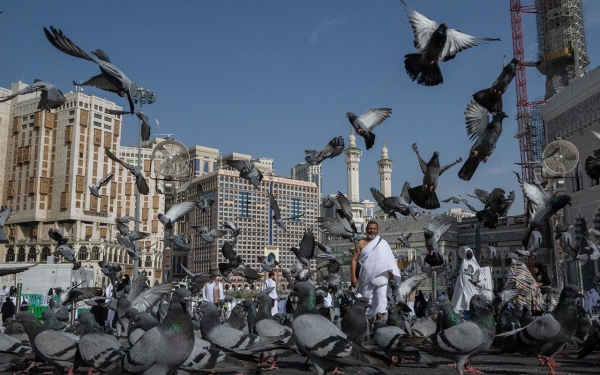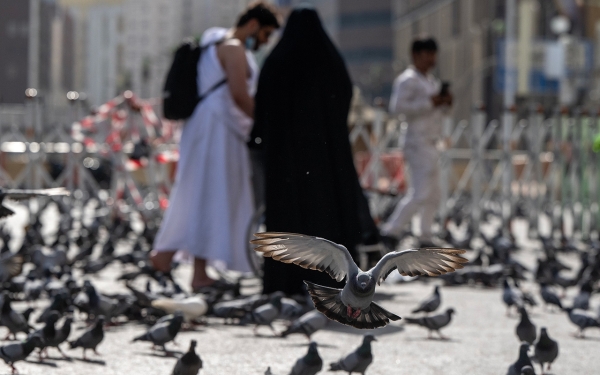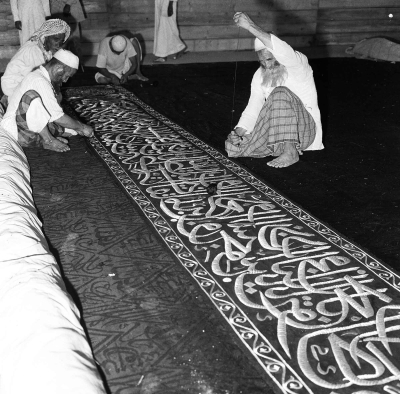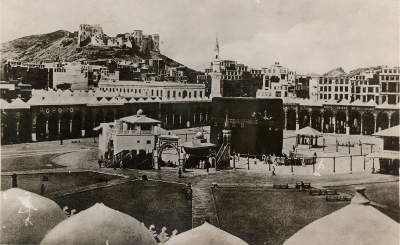


The Pigeons of the Grand Mosque, also known as "pigeons of al-Hema" and referred to by the residents of Makkah as "pigeons of the Household," are the pigeons of Makkah al-Mukarramah and a distinctive feature of the city. These pigeons are treated with special care, and it is prohibited for anyone, whether in the state of Ihram or not, to kill or disturb them.
Poets have often sung about the pigeons of the Grand Mosque in their poems, and they have become a symbol in various proverbs.
Origin of the pigeons of the Grand Mosque
The pigeons of the Grand Mosque are unique in their species for being a pure breed. Different narratives exist regarding the origin of these pigeons. Mohammed Bin Abdullah al-Azraqi suggested that they are descendants of the Ababil birds that attacked the Army of the Elephant. Al-Suyuti mentioned that their origin traces back to the two pigeons that nested at the Cave of Thawr during the migration of Prophet Muhammad's, peace be upon him (PBUH), to al-Madinah al-Munawwarah. Some have mentioned that their origins trace back to a European lineage, but this has not been proven.
Characteristics of the pigeons of the Grand Mosque
The pigeons of the Grand Mosque are characterized by their grayish-green or bluish-white color. The area from the head to the neck is intensely blue with iridescent highlights, while the tips of their wings and tail are black, a feature not found in other birds. The pigeons of the Grand Mosque share similar appearances.
The Care of Makkah residents and visitors for the pigeons of the Grand Mosque
Visitors performing Hajj and Umrah have traditionally offered water and grains to the pigeons of the Grand Mosque in Makkah al-Mukarramah, seeking Allah's reward.
The care of the pigeons of the Grand Mosque by the residents of Makkah and its visitors is not a modern practice; it has been a tradition since ancient times. The various forms of care for these pigeons have been documented in many books. It was mentioned that during the pre-Islamic era, there was a well-known as the Well of the Pigeons located under Mount Abu Qubais on the eastern side of Makkah. A large number of the pigeons of the Grand Mosque would gather there to drink before flying off to their destinations.
In modern times, a citizen in Makkah al-Mukarramah dedicated an endowment whose proceeds are allocated for the care of the pigeons of the Grand Mosque. This has been recorded in the endowment registers.
The pigeons of the Grand Mosque in Makkah al-Mukarramah receive care from dedicated endowments, which provide them with food and water. Additionally, the Holy City Municipality has contributed by constructing towers specifically designed to shelter the pigeons after sunset. There are an estimated six towers located around the Hajoun Bridge near al-Mu'alla Cemetery.
Pigeons of the Grand Mosque in written heritage
It is rare to read a description of the Grand Mosque without mention of the pigeons. Mohammed Labib al-Tabnuni, an Egyptian writer, noted in his book "The Hijazi Journey" in 1911 that the pigeons of the Grand Mosque, known as the pigeons of al-Hema, fill the roofs, entrances, and niches of the Grand Mosque. You find them nesting here and there, gathering in flocks in many parts of the courtyard, especially on the eastern side, where they have a designated area with drinking basins and a place nearby where wheat is regularly provided for them at specific times. You often see them on the western side, where several poor individuals sell wheat to pilgrims and visitors intending to feed these domesticated pigeons, which almost flutter over people's heads. These pigeons have only known kindness and friendliness from people throughout their lives. This characteristic is not limited to the pigeons alone; every animal that enters the Grand Mosque is safe. The unique presence of pigeons in the Grand Mosque is likely due to their easy tameness and their gentle nature.
Related quizzes

